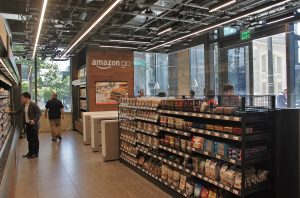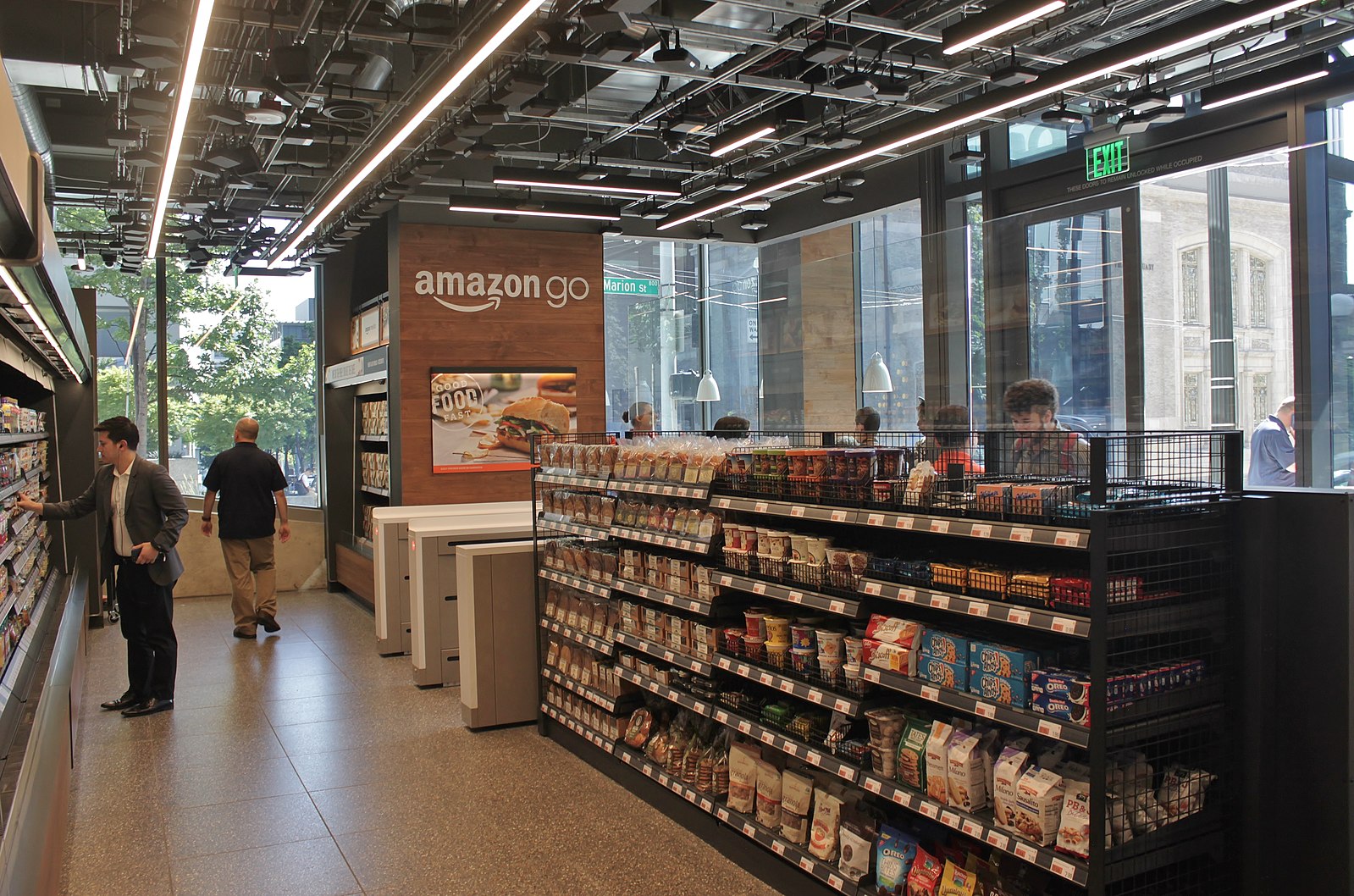By Kirstin Winter

Since 2018, Amazon has offered shoppers a till-free experience in their 26 ÔÇ£Amazon GoÔÇØ stores in the United States. On February 25th2020, Amazon opened its largest and most recent ÔÇ£Go GroceryÔÇØ store in Seattle. The ÔÇ£just walk outÔÇØ slogan entices shoppers with the promise of no queues and, potentially, no human interaction. This opening was accompanied by the announcement that Amazon would license the technology to its high street competitors.┬á
Despite initial teething problems, the technology appears to work with great efficacy. Initial problems arose regarding people of the same body size or when children moved items around the shelves. These problems were resolved in 2016 when the store was opened, and the technology was tested on Amazon employees.
The existing ÔÇ£Go GroceryÔÇØ stores operate using barriers akin to the London Underground barriers.┬á Shoppers use the ÔÇ£Amazon goÔÇØ app to scan a QR code on their smartphone. This connects to their Amazon accounts so that anything the shopper picks up- and keeps- will be billed straight to their account. The technology can discriminate between items picked up and put back, and items kept; a receipt is issued on exit to reassure sceptical shoppers.┬á┬á┬á
Whilst Amazon do not share the specifics of how the technology works, it involves hundreds of cameras and depth sensors, that they claim can be installed in a matter of weeks; ÔÇ£Our checkout-free shopping experience is made possible by the same types of technologies used in self-driving cars: computer vision, sensor fusion, and deep learningÔÇØ. The data is remotely analysed using algorithms on Amazon computers.┬á
According to AmazonÔÇÖs website, the data collected is only used to produce an accurate receipt, and shoppers should think of the cameras like they would security cameras.┬á
The announcement of Amazon licensing the software for other retailers did not come as a surprise to experts in the field. There are however still concerns regarding the technologyÔÇÖs efficacy on a large scale. The ÔÇ£Go GroceryÔÇØ Seattle-based store measures 29 sq. m; UK supermarkets can be up to 17,233 sq. m.┬á┬á
Job losses with a technology of this manner are an ever-increasing concern. The till-free technology could circumvent any human interaction at all- providing the shopper does not buy any alcohol or items that need age verification. However, supporters argue that the workers would instead be involved in more meaningful tasks, such as: ÔÇ£to greet and answer shoppers’ questions, stock the shelves, check IDs for the purchasing of certain goods, and more – their roles have simply shifted to focus on more valuable activitiesÔÇØ.┬á
The nature of retailer sector jobs will inevitably reflect the shift towards automation, Ms Berg- NBK Retail consultancy founder- explains: ÔÇ£the skills required across the retail sector are going to evolve massively over the next decadeÔÇØ. Customer-assistant roles may therefore become more customer-orientated at the point of browsing with the possible mainstream emergence of this technology.
Overall this technology offers an exciting insight into the way our shopping could change over the next ten years, it suggests that online shopping and shopping in store may be more overlapped than previously thought.








Add Comment